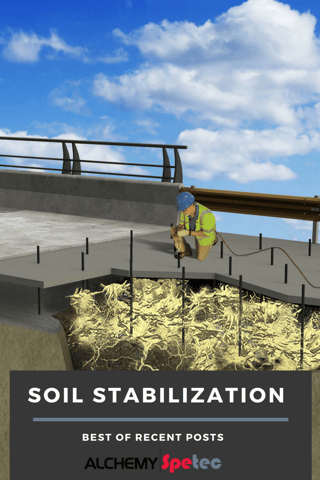.png?width=899&height=273&name=best-banner%20(1).png)
Continuing with this week's review of essential recent blog posts, we'll take a look at three articles on soil stabilization. The first post is a very informative case study on a sinkhole repair job. The next two posts profile key soil stabilization products that every contractor should be familiar with.
 Case Study: Sink Hole Repair
Case Study: Sink Hole Repair
By Anthony Sandone
Kiawah Island is located in Charleston, South Carolina. Due to the makeup of this area, water flows abundantly in every area naturally. In this post I'll discuss a sinkhole that appeared on one of the island's bike trails. This was caused by the soil eroding away under an asphalt sidewalk. This particular bike trail rested on and around a pond that contained fresh fish. The only acceptable route to fix this issue was to use Alchemy-Spetec's H100, which has been certified as safe for contact with drinking water.
Stabilize Soil with H40
By Thad Brown
Unstable soil can be defined as soil that will not stay in place on its own, and therefore requires extra support. It should be noted that unstable soil can threaten the stability, security, and safety of infrastructure and can damage, degrade, and even destroy a number of structures, such as buildings, bridges, and roads. There are a variety of factors that can cause unstable soil including erosion, poor compaction, freeze/thaw cycles and decomposition.
Soil Stabilization with AP Soil 600
By Thad Brown
AP Soil 600 is used mainly for three types of applications: permeation grouting, the stabilization of loose sand and soil, and sinkhole remediation. This product does not require a catalyst. It's great for encapsulating and strengthening loose soil. AP Soil 600 provides excellent soil penetration due to its low viscosity.


